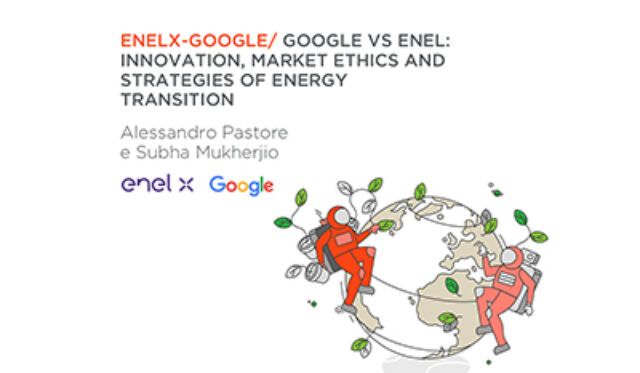
Today everybody is speaking about electrification of our transportation. It is an unavoidable change we need to implement to tackle the carbon neutrality challenge. But how can this electrification be considered sustainable and take us closer to our goals? Will this be the new beginning or the end? In this podcast we analyzed different aspects of this hot topic. In particular, it was of special interest to understand whether and how electrical mobility can support our fight against climate change, limiting the consumption of fossil fuels, as well as direct emissions. But inevitably there is also the other side of the coin: how long will it take to obtain relevant results, at the global scale and the price we will have to pay, considering the broader perspective of overall sustainability.
According to the energy transition outlook, there will be few billion of electric vehicles on the road by 2050. In order to accommodate such a huge number of batteries to be charged, the electric grid needs to be modernized as well, as planning will be the key issue in the upcoming years. Also, in order to say that the transportation is really green, we need to use the renewable energy sources to charge the batteries, otherwise there is no meaning to it. Charging is usually done by different types of chargers (slow or fast chargers), but also there is a recent trend to develop EV highways, already accepted by some European countries, where the charging will occur during the ride, or wirelessly. Consider that in this case, the whole highway structure needs to be modified, in order to accommodate the charging pads under them.
Another key issue when we speak about clean and green transportation is the batteries, the most important component in the EV. Usually we consider lead-acid or lithium-ion rechargeable batteries which rely on critical minerals: cobalt, graphite, lithium, and manganese. It then becomes apparent that EVs could create a trail of dirt from the mining and processing of minerals upstream. This is also because they can be found in few countries with weak or inexistent environmental and labor regulations. When speaking about battery production and assembling industries, it is important that they also perceive sustainability properly in all their processes. In the end, once the battery is inside the EV, and is being used, there will be the need to think about what to do with them, as their capacity is degraded to 80% of the original capacity (considered the end-of-life). That battery is still a good battery, and it needs to find the second life usage, often called second-life-batteries.
When it comes to the life cycle of the batteries, the life cycle thinking becomes the most desirable approach: it is about going beyond the traditional focus on production site and manufacturing processes to include environmental, social and economic impacts of a product over its entire life cycle.
One has to consider, on the one hand, the raw materials extraction and global supply chains: lithium is concentrated in Argentina, Bolivia, and Chile. The Democratic Republic of the Congo (DRC) is the world’s dominant source of cobalt. Mineral extraction in these locales is related to environmental degradation and human rights abuses. So, the overall sustainability of the supply should be closely monitored.
Considering, on the other hand, the end of life, there is a concern about the impact generated in the long run and the identification of who is going to take on the responsibility and the costs of it. It is reasonable to foresee an application of the Extended Producer Responsibility (EPR) (it can be defined as “an environmental policy approach in which a producer’s responsibility for a product is extended to the post-consumer stage of a product’s life cycle”), but there is also the need to outline and implement new value chains, which address the end of life with a cradle-to-cradle approach
Thanks to the application of LCA, we are able to account for the impacts generated along the whole life cycle of EVs and compare them with other LDV options. The results of such assessment can hardly be generalized, as the impact of EVs strongly depends on the electricity mix used to generate the electricity. For instance, the emissions level decrease for EV compared to internal-combustion-engine vehicles, but there is an increase in human toxicity level for EV, due to the larger use of metals, chemicals and energy for the production of powertrains. And in terms of cost, EV has lower operating cost but has higher overall LCC due to higher acquisition price of batteries, uncertainty in pricing of future gasoline and electricity mix and higher initial cost.
There are some promising solutions also in the electric vehicle types., which are not so popular nowadays, such as for example fuel cell electric vehicles. They got the name because the heart of such vehicles is fuel cells that use chemical reactions to produce electricity. Hydrogen is the fuel of choice for FCVs to carry out this reaction, so they are often called “hydrogen fuel cell vehicles”. Water is the only byproduct of its power generating process. A huge advantage of such vehicles is they can produce their own electricity which emits no carbon, making them the winner of the carbon reduction footprint among all EVs. Another important aspect is the refilling process, as it takes the same amount of time required to fill a conventional vehicle at a gas pump, so our habits in refilling would not need to be changed to a large extent as for other EVs. Major obstacles are the same as for hydrogen in general, such as the scarcity of hydrogen fuel stations, high cost, and safety issues in case of flammable hydrogen leaking out of the tanks. If these obstacles were eliminated, FCVs could really represent the future of cars.
But as EVs are playing an important role in the carbon neutral future, it is important also to understand what the main obstacles are in adopting more electric vehicles. The transport sector accounts for about 20-25% of GHG emissions, at a global level and road transport is the main contributor. In this sense, improving the climate performance of the sector would positively affect our way to achieving the targets set by Paris agreement.
It is necessary to evaluate not only the direct emissions, but also the indirect ones, as mentioned before, through a Life Cycle Thinking approach.
At present, we have several barriers against a broader diffusion of EVs: during the present global crisis, production bottlenecks related to raw material shortages; pricing, which limits the market penetration; uncertainties about incentive schemes and timing; uncertainties regarding maintenance in the long run and end-of-life (especially in terms of costs); difficulties in the everyday management of EVs: how and where to charge them, how long does it take, lack of standard in the connectors etc.



